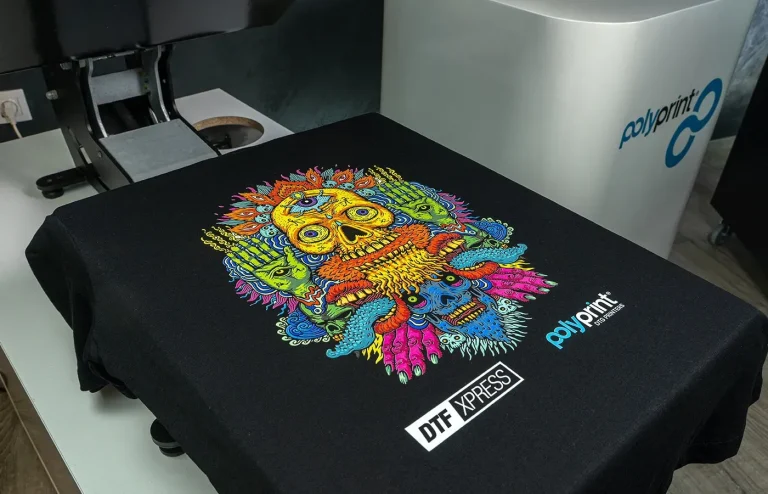In the ever-evolving world of custom apparel, DTF printing emerges as a groundbreaking solution that is transforming creative projects for designers and entrepreneurs alike. Direct-to-Film printing combines cutting-edge technology with the versatility required to make a lasting impact in today’s competitive market. With its ability to produce high-quality prints on various fabric types, including cotton and polyester, DTF printing offers numerous advantages over traditional methods. Artists can harness DTF technology to create intricate designs that stay vibrant and durable even after repeated washes. Whether you’re launching a new clothing line or personalizing items for special occasions, understanding DTF printing can significantly enhance your creative endeavors.
Revolutionizing the way we think about textile printing, the Direct-to-Film method is changing the landscape for creators across various industries. This advanced printing process allows for striking visuals and custom designs that resonate with consumers seeking unique, personalized products. As a versatile choice, this technique accommodates a range of materials, making it ideal for applications beyond just apparel. Entrepreneurs and artists can capitalize on DTF technology to streamline production and explore fresh creative possibilities. With a focus on quality and adaptability, this printing approach represents a powerful tool for those looking to elevate their creative projects.
Exploring the Fundamentals of DTF Printing
Direct-to-Film (DTF) printing represents a major advancement in printing technology, allowing for exceptional versatility beyond traditional printing methods. By utilizing a specialized transfer film, DTF printing enables artists and designers to create vivid, highly detailed prints on a wide array of materials. The process entails printing a design onto the film, followed by transferring it to the substrate using heat and pressure. This adaptability means that whether working with cotton, polyester, or blended fabrics, creatives can explore new avenues for their artistic expressions.
Moreover, DTF technology caters not only to the fabric but also opens doors for various applications, including custom apparel, home décor, and promotional products. This innovation allows for a more dynamic approach to project execution, ensuring that ideas can come to life on virtually any medium. With its ability to produce stunning graphics, DTF printing is a game-changer for those looking to elevate their creative projects.
Frequently Asked Questions
What is DTF printing and how does it work?
DTF printing, or Direct-to-Film printing, is a modern printing technique where designs are printed onto a special transfer film. This film is then applied to various surfaces, such as fabrics, using heat and pressure. The process allows for vibrant colors and detailed imagery, making it suitable for custom apparel and a variety of creative projects.
What are the main advantages of using DTF printing for custom apparel?
The primary advantages of DTF printing for custom apparel include its versatility, cost-effectiveness for small runs, and high durability. Unlike screen printing, DTF printing works on various fabrics without sacrificing quality. It also allows small businesses to produce unique items at lower costs, ideal for creative entrepreneurs.
Can DTF printing be used on different types of fabrics?
Yes, DTF printing is highly versatile and can be used on a wide range of fabrics, including cotton, polyester, and blended materials. This flexibility makes it perfect for customizing various products, from T-shirts to bags, enhancing your creative projects.
How does DTF printing compare to traditional screen printing?
Compared to traditional screen printing, DTF printing offers greater versatility and lower setup costs, especially for small production runs. While screen printing requires specific fabric types and can be expensive, DTF printing allows for high-quality designs across multiple materials without compromising durability.
What types of creative projects benefit from DTF printing technology?
DTF printing technology is ideal for creative projects that require intricate designs and photographic quality. This includes custom apparel, promotional products, home décor, and personalized items. The ability to create one-of-a-kind pieces caters to a growing demand for unique customizations.
Is DTF printing environmentally friendly?
DTF printing can be made more environmentally friendly by using eco-friendly inks and materials, a trend gaining traction within the industry. As sustainability becomes increasingly important, many DTF printing suppliers are focusing on reducing environmental impacts while maintaining the quality required for creative projects.
| Feature | Description |
|---|---|
| What is DTF Printing? | An advanced printing method that prints designs onto transfer film, suitable for multiple substrates. |
| Advantages | 1. Versatility: Can print on various materials without compromising quality. 2. Cost-Effective: Ideal for small runs without high setup costs. 3. Quality: Durable and vibrant prints that withstand washing. |
| Creative Potential | Allows intricate designs and personalization, catering to customer preferences. |
| Industry Trends | Growing adoption across industries for custom products; emphasis on sustainability in future developments. |
Summary
DTF printing is revolutionizing the way creatives approach their projects by offering incredible versatility, cost-effectiveness, and unmatched print quality. This innovative printing technology allows for the creation of high-quality, detailed designs on a variety of fabrics, making it an ideal choice for artists, designers, and business owners alike. As more industries adopt DTF printing, the demand for personalized and unique products continues to rise, further enhancing its role in the creative landscape. By leveraging DTF printing, you can explore new dimensions in your creative projects, ultimately unlocking the potential for greater customer satisfaction and business success.


